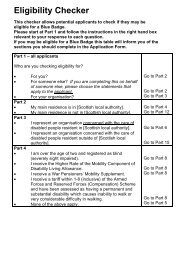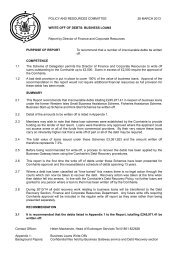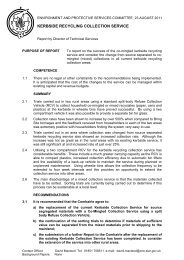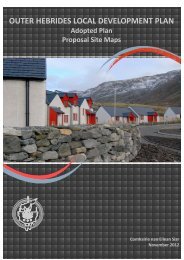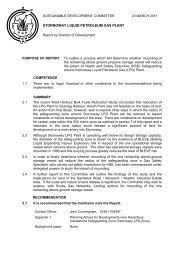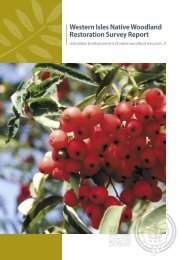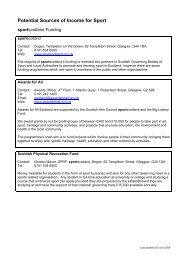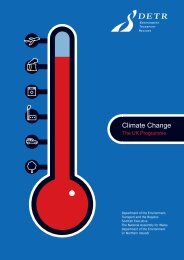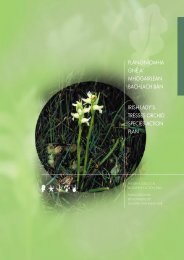Waste Management Strategy - Comhairle nan Eilean Siar
Waste Management Strategy - Comhairle nan Eilean Siar
Waste Management Strategy - Comhairle nan Eilean Siar
You also want an ePaper? Increase the reach of your titles
YUMPU automatically turns print PDFs into web optimized ePapers that Google loves.
BPEO Considerations<br />
• Environmental Possible reduction in transportation costs and amount of material going to landfill. All emissions would be<br />
controlled. Some energy recovery, therefore, lowering the requirement for other energy sources.<br />
• Economic Substantial start up cost. Unit costs are relatively high in comparison to landfill, however this difference will<br />
reduce as the cost for landfill rises. Potential to sell landfill permits to other waste areas. Income from accepting wastes<br />
from other areas.<br />
• Social Would result in significant employment. New skills required. Producers not responsible for their own waste. Would<br />
have to be located to ensure odour, traffic, litter and noise do not cause a public nuisance. May adversely affect local house<br />
prices.<br />
• Practicability High planning risk as option is not flexible to changing circumstances. Volumes and types of waste would<br />
have to be consistent. Would rely heavily on wastes from outwith waste strategy area to ensure viability. <strong>Waste</strong> transport<br />
may be affected by weather.<br />
• Compliance with other Policies The plant would require an Integrated Pollution Control (IPC) Authorisation. All Landfill<br />
Directive targets would be met.<br />
5.5 Option 3: Centralised In-Vessel Composting<br />
In addition to waste minimisation initiatives the recycling of the organic fraction of waste (such as vegetable peelings and<br />
garden wastes) will be increased. This option relies on a large centralised composting plant in Stornoway taking biodegradable<br />
waste from all the islands. All areas would be required to segregate their vegetable and garden wastes and either deliver them<br />
to a local bring site or present them for collection by a split RCV. Recyclable materials such as glass, paper, plastics and metals<br />
would also be collected at these bring sites. All other wastes would be collected and transported to Bennadrove landfill site for<br />
disposal.<br />
A soil conditioner material would be produced and used, if possible, for land improvement schemes. If not it would be<br />
transported to Bennadrove to be used for landscaping.<br />
As in option 2 waste would also be imported from Skye and the western fringes of the mainland. These and other segregated<br />
wastes that could be used in the Western Isles would be transported by sea. This form of transportation could also be used to<br />
transfer waste from the southern isles to Stornoway.<br />
BPEO Considerations<br />
• Environmental All emissions from the composting vessel would be controlled. No energy recovery. Additional<br />
transportation from Skye and Scottish mainland would be involved.<br />
• Economic Split RCVs would need to be bought. Income could be generated from accepting wastes from other waste areas.<br />
Potential to sell landfill permits to other waste areas.<br />
• Social Some personal responsibility for your own waste. Some new skills required. Recycling access improved in some<br />
islands. Potential additional employment in plant and relating to shipping.<br />
• Practicability Technology well proven. <strong>Waste</strong> transport may be affected by weather.<br />
• Compliance with other Policies Fit Good participation would result in Landfill Targets being met.<br />
What’s a split RVC<br />
This is a bin lorry with separate compartments to take different segregated wastes such as cans, glass and vegetable and<br />
garden waste<br />
Western Isles <strong>Waste</strong> Options Paper 13



